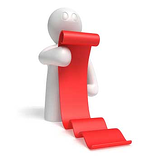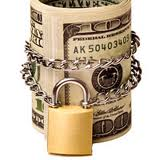e-mail: "bjbarhop@aol.com, web page
www.BobTheBarGuy.com
phone number: (800) 447-4384
Why hire a bar consultant? I get asked this question a lot. So I felt the best way to answer is by sharing what I experienced on my last consulting job, which took place at a Mexican restaurant/bar outside Los Angeles that was owned by a young couple who knew a lot about the restaurant business, but didn’t have a clue about the bar. They did, however, know that the majority of their profits should be coming from the bar. It wasn’t.
By explaining some of my consulting procedures and techniques, you might get a better understanding of how much difference a qualified bar consultant can make in having a better-run, more profitable bar. We’re talking money here—bottom line results putting more money in the owner’s pocket. Isn’t that why you got into this business, to make as much money as possible? Everything I do as a bar consultant translates into making more money for the owner.
The first thing I tell anyone using my consulting service is, “don’t take anything personally.” It’s easy to offend egos amongst so much correction and professional critique. Many people have a true passion for their rather hefty investment, and sometimes they take not knowing how to run it very personally. But it’s just business.
Once on site at the Mexican bar/restaurant, I looked at the drink stations and the general arrangement of everything behind the bar. There was no standardized order or arrangement of liquor bottles at the two drink making stations. Nothing was labeled. The high-usage items were not at the bartenders’ fingertips. Motion was reduced and drinks could not be made quickly. The drink stations did not “mirror” each other. Bartenders had to cross behind or reach over each other to get certain liquors. The soda guns were in the middle of the ice bin instead of on the far left side, so the hose of the soda gun was in the way of icing glasses, making it difficult to make drinks. I suggested putting a call in to the manufacturer to get the guns reinstalled in the right place.
The lack of prioritized organization here reminded me of how important it is to do an analysis of liquor usage—what sells and what doesn’t. So we analyzed POS sales reports. From that analysis we culled a “dead stock” inventory of liquor product that wasn’t selling and we placed it away from the bar and storeroom, far from the active liquor inventory.
With the remaining product—the “active liquor”—we created a bottle arrangement system for both drink making stations and the back bar that made it easy to know where everything was located, then labeled every bottle location.easy to pinpoint two reasons bars go under: Lack of manage is usually created by the lack of management skills, but a Next I looked at how they were pricing their liquor “by the shot,” and discovered they were missing out on an additional 20 to 25% in gross profit because they didn’t understand how to price properly. They only had three categories—well, call, and premium. I changed that to five categories: well, call, premium, super-premium and top shelf. I estimated that correctly pricing the liquor would add an additional $30,000 to $40,000 gross profit to their business by year’s end, at their present rate of sales.
I also recommended discontinuing the use of quarters behind the bar, making all drink prices even-dollar amounts. I changed the way they charged tax on each drink; we made all drink prices inclusive with tax—in other words, $4.50 for the drink, not $4.25 for the drink plus $.28 tax.
I noticed the venue’s POS register system needed upgrading to better reflect actual sales. It was recording “doubles” but wasn’t identifying what liquor was being poured as a double. We called a technician and had drink prices reentered according to the new five-tier categories. Most of the recipe drinks were also incorrectly priced and were subsequently changed as well.




